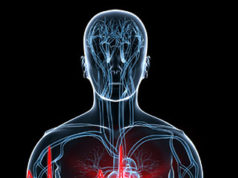Corvia Medical has enrolled the first patients in its global multicentre trial (REDUCE LAP-HF II) of the interatrial shunt device (IASD) for the treatment of heart failure. Results from the randomized feasibility trial (REDUCE LAP-HF I) will be presented today at the 2017 American Heart Association (AHA) Scientific Sessions (11–15 November, Anaheim, USA).
The IASD is the world’ first transcatheter device—approved in the European Union—that has been designed to treat patients with heart failure with preserved or mid-range ejection fraction. After a small opening in the atrial septum is created, the IASD implant is deployed—forming a passage between the left and right atria. The goal is to enable the left atrium to decompress at rest and during physical activity, with the aim of lowering left atrial pressure.
The system is being evaluated in the REDUCE LAP-HF II trial; a prospective, multicentre, double-blind randomised controlled trial. The study will enrol patients at up to 70 sites in the USA and up to 30 sites outside the USA. Sanjiv Shah and Ted Feldman (both NorthShore University HealthSystem, Evanston, Illinois) are the co-principal investigators.
Rami Kahwash (Ohio State University Wexner Medical Center, Columbus, USA) enrolled the first patient in the trial. He comments: “The treatment of heart failure with preserved ejection fraction is challenging, and caring for these patients can be frustrating. Multiple randomised drug trials have demonstrated that conventional heart failure medications are ineffective in this type of heart failure and as a result, patients have limited therapeutic options. Since heart failure symptoms are directly linked to elevated left atrial pressures, the interatrial shunt device has the potential to offer an effective treatment by facilitating continuous and dynamic decompression of the left atrium, subsequently reducing symptoms and improving quality of life for this patient population.”
Shah will be presenting, on behalf of the investigators, at the Innovative Therapies and Novel Applications session of the Late-Breaking Science programme today. The presentation, titled Transcatheter Interatrial Shunt Device for the Treatment of Heart Failure: Results from the REDUCE LAP-HF I randomised controlled trial, will be held at 9:00am PT.
“Having experience with the IASD in prior studies, I have substantial appreciation for the elegance of the implant procedure and have been very satisfied with the positive effect it has had. The open label study showed that following IASD implantation, patients had significantly fewer heart failure symptoms and could exercise significantly longer, giving them a substantially better quality of life. We are pleased to be part of the pivotal study and continue to offer this innovative treatment to our heart failure patients,” comments Feldman.










